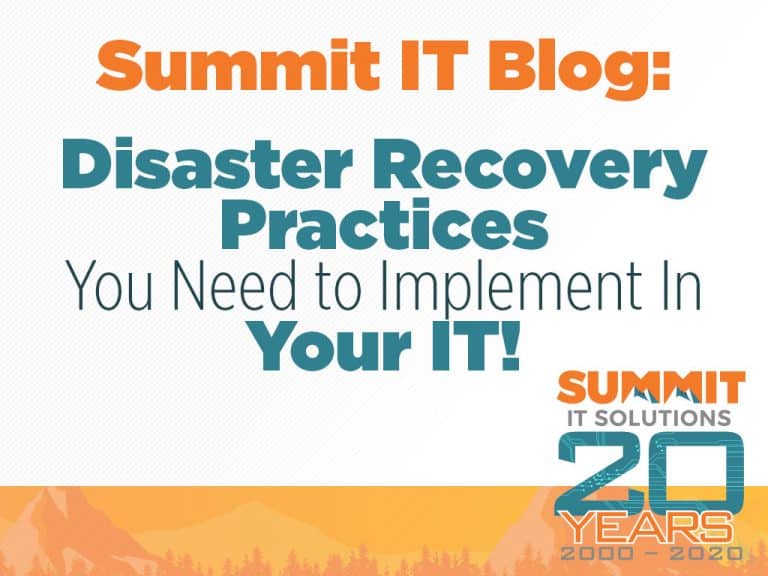
Losing data and having your IT environment become compromised is a terrible situation for any business to be in.
It’s simply impossible to completely protect yourself and your company from every risk in our world today, and it is crucial to have a comprehensive disaster recovery plan to help mitigate any damages and get your business back up and running in case disaster strikes.
Whether it is due to human interference, a natural disaster, or a pandemic; if your IT is compromised, you need a plan in place.
These are some of the best practices Summit IT Solutions recommends for Disaster Recovery Preparedness:
- A major first step is to begin compiling an inventory of hardware (e.g. desktops, servers, laptops and monitors), software applications, and data. This also includes a strategy to ensure all critical information is backed up.
- Identify critical software applications and data and the hardware required to run them.
- Consider all of your greatest IT vulnerabilities and weaknesses. Identifying these possible weak spots allows you to prepare for a scenario in which they are affected. Take into account the vulnerabilities of hardware, software, technology setting, and connectivity.
- Identify and utilize critical software and the hardware required to run the software for your essential business operations. Having standard software and hardware allows businesses to recover quicker and replicate these items faster.
- Document all steps in your disaster recovery plan, and test them out periodically with realistic disaster scenarios, to make sure that your plan would function under these dire circumstances.
- Develop a data backup plan. Identify what data is essential to backup and implement hardware and software backup procedures.
- Conduct backup checks and periodically validate that data has been accurately backed up.
- Train employees and educate them on your disaster recovery plan. Let them know the general plan and process, who is involved, and the roles and responsibilities of everyone involved.
- Create a communications plan- communication is key to recovering from an IT disaster. Make sure all employees, vendors, suppliers, and other key relationships understand your plan and strategy of recovery.
- Map out a plan and timeline for a return to normal operations. This is obviously the overall goal of a Disaster Recovery plan. Make sure you have the procedures and items necessary to take the final step of getting back to the original state of the business.
